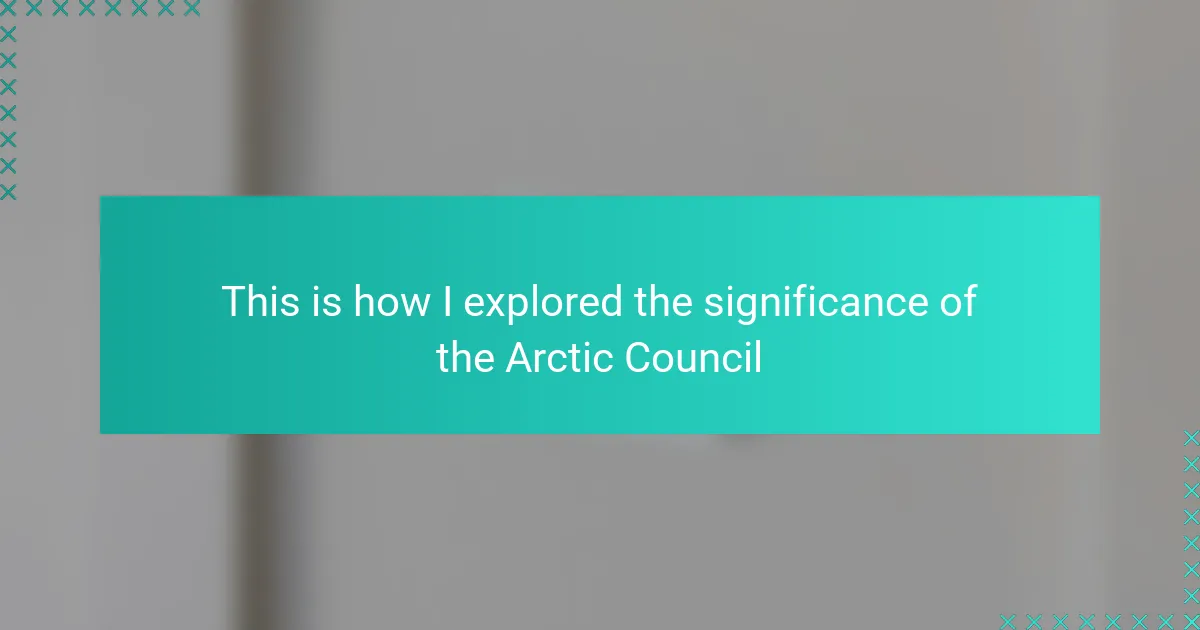Key takeaways
- The Arctic Council fosters cooperation among member states and indigenous communities to address environmental and sustainable development challenges, emphasizing consensus and inclusion.
- Despite geopolitical tensions, the Council acts as a bridge for dialogue, focusing on shared challenges like climate change and maritime safety, which influences global discussions beyond the Arctic.
- Challenges include the consensus rule, which can lead to decision-making gridlock, and balancing economic interests with environmental protection amidst rising tensions in the region.
- Including indigenous voices enhances dialogue and demonstrates the importance of respect and collaboration in international relations, highlighting the value of listening over power dynamics.
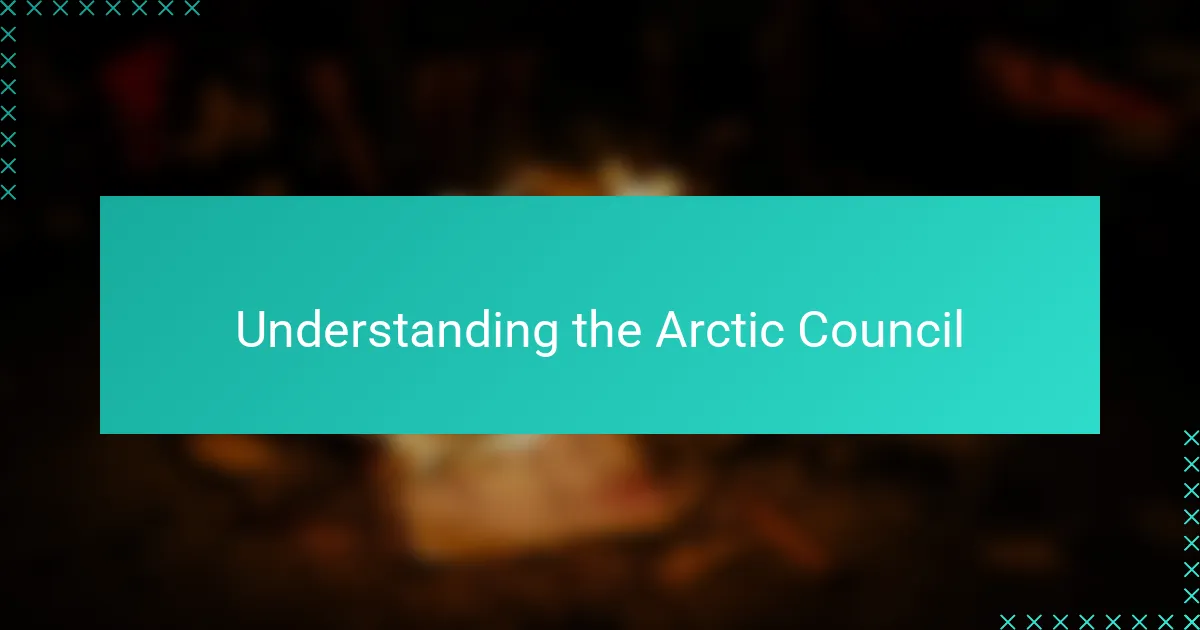
Understanding the Arctic Council
When I first encountered the Arctic Council, I admit I underestimated its role. But diving deeper, I realized it’s far more than a diplomatic forum—it’s a unique platform where Arctic nations and indigenous communities collaborate on pressing environmental and sustainable development issues. Have you ever wondered how these often-forgotten lands stay connected with global politics?
What struck me most was the Council’s emphasis on consensus and inclusion. It’s not just about big powers asserting influence; it’s about listening to those who live in the Arctic and respecting their knowledge. This approach felt surprisingly human in a world often dominated by power struggles.
Exploring the Council made me reflect on how international cooperation can work when guided by trust and shared responsibility. It challenged my assumptions about conflict in geopolitics—sometimes, cooperation isn’t just possible; it’s absolutely essential.
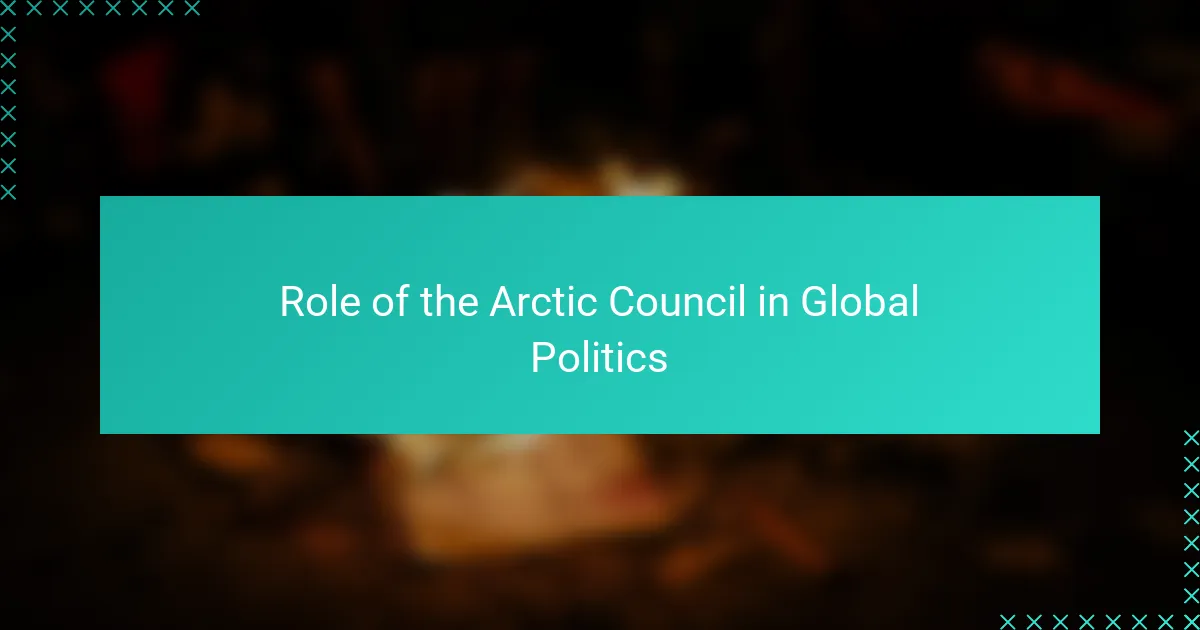
Role of the Arctic Council in Global Politics
When I looked closely at the Arctic Council’s role in global politics, I realized it acts as a rare bridge between rival powers. Instead of fueling competition, it channels dialogue around shared challenges like climate change and maritime safety. Have you ever seen nations set aside their differences just to protect a fragile environment? That’s the Arctic Council in action.
What surprised me even more was how the Council influences policies far beyond the Arctic Circle. Its focus on sustainable development and environmental protection shapes global discussions on climate governance. It’s a reminder that the Arctic isn’t isolated—it’s connected to every corner of the world through these policy currents.
Thinking about this, I started to appreciate how soft power operates differently here. The Arctic Council doesn’t wield traditional military or economic might, yet its impact is undeniable. Isn’t it fascinating how cooperation and respect for indigenous voices can become a powerful form of influence in today’s geopolitical landscape?
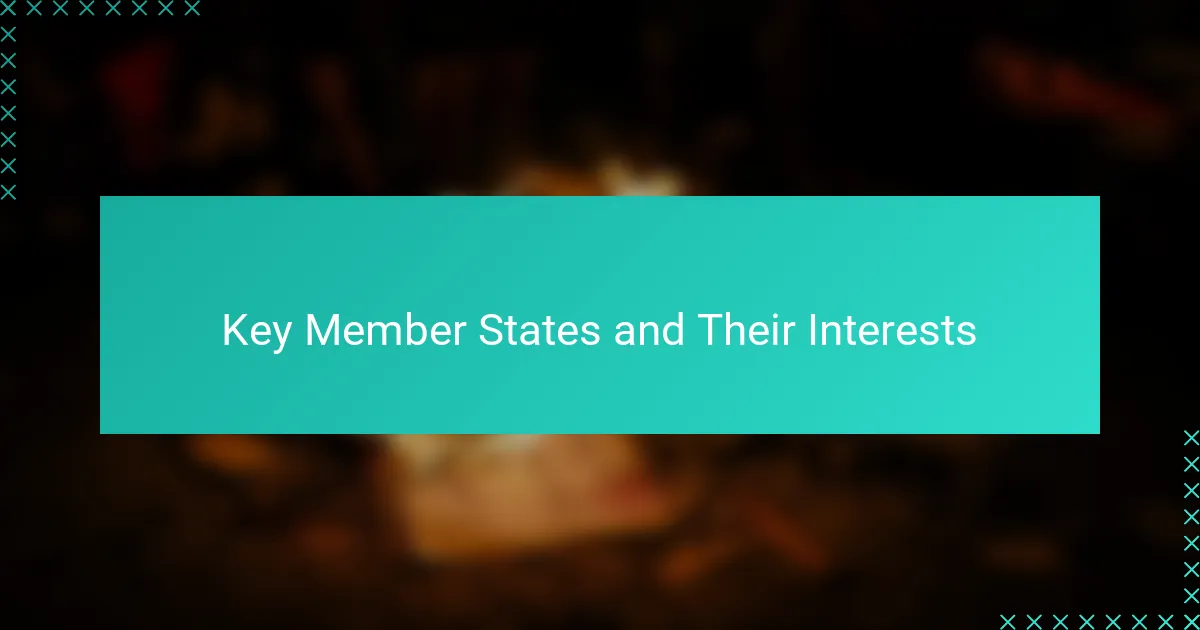
Key Member States and Their Interests
When I examined the key member states of the Arctic Council, I noticed how diverse their interests truly are. Countries like Canada, Russia, and Norway are deeply invested in Arctic resources and shipping routes. I found it interesting how these nations balance economic ambitions with environmental responsibilities—a challenging act, in my opinion.
The United States stands out for its strategic and security concerns in the region. I often wondered how Washington juggles its position as a global superpower with the council’s cooperative spirit. It seems their approach is less about dominance and more about maintaining stability while addressing climate change.
Then there are the Nordic countries, particularly Sweden and Finland, whose focus appears more aligned with scientific research and indigenous rights. I appreciated their insistence on combining traditional knowledge with modern policy. Doesn’t this blend enrich the council’s decision-making and make cooperation more authentic?
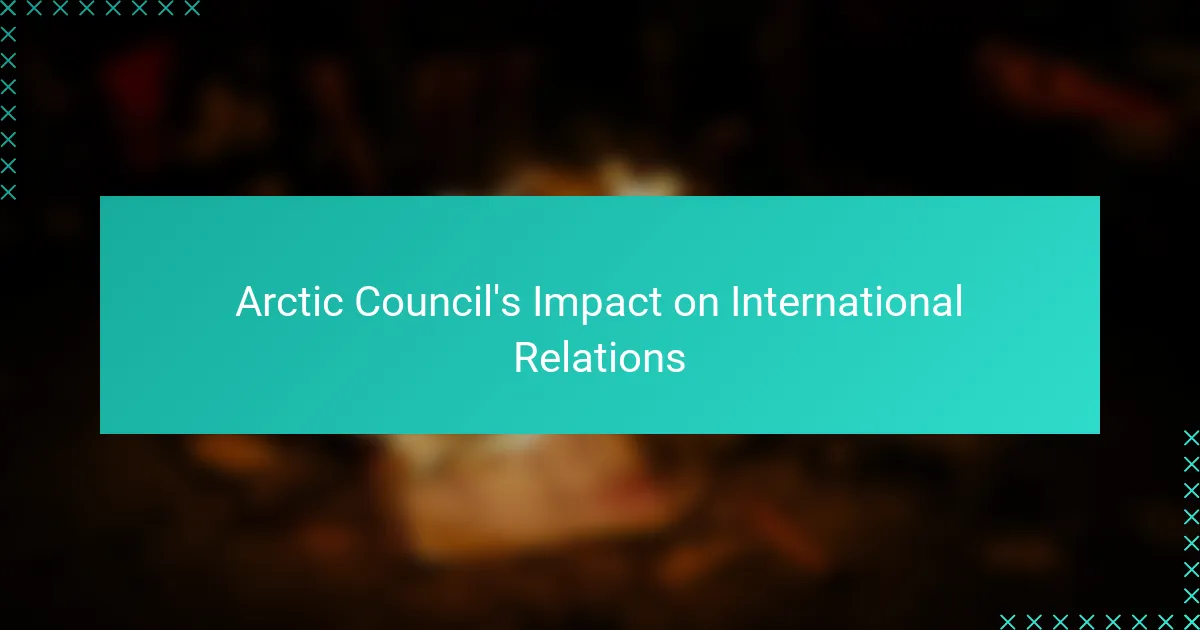
Arctic Council’s Impact on International Relations
When I first explored the Arctic Council’s impact on international relations, I was struck by its subtle yet profound influence. It’s fascinating how this body manages to bring together countries with conflicting interests and still foster dialogue rooted in mutual respect. Have you noticed how rare such consensus-driven forums are in today’s fractured global landscape?
What really caught my attention was how the Council reshapes traditional geopolitics—not through power plays, but through cooperation on shared challenges like environmental protection and indigenous rights. I found myself thinking: could this model inspire other regions plagued by tension? To me, it feels like a hopeful example of diplomacy that prioritizes common good over rivalry.
Moreover, witnessing how the Arctic Council negotiates delicate issues without formal enforcement powers made me appreciate the power of soft diplomacy. It’s a reminder that influence doesn’t always come from muscle or money but often from building trust and listening carefully—skills that seem lost in many international interactions today. Isn’t it encouraging to see such a different approach making a real difference?
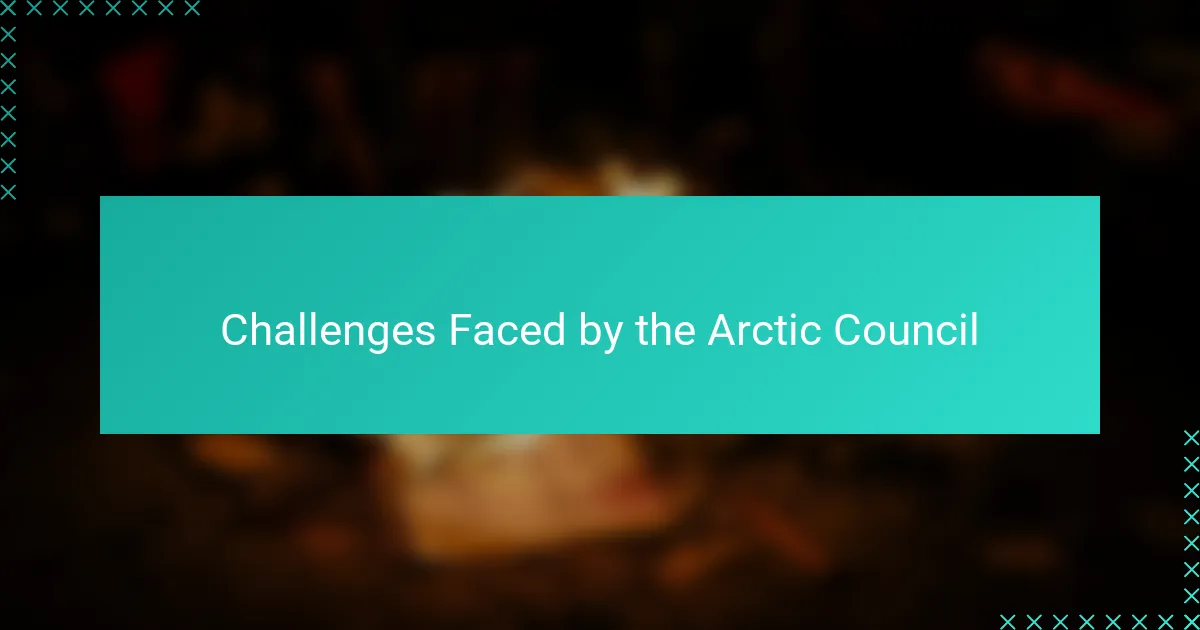
Challenges Faced by the Arctic Council
One challenge that immediately stood out to me was the Arctic Council’s strict consensus rule. At first, it seems like a perfect way to ensure everyone’s voice is heard, but I quickly realized it can also lead to gridlock. Have you ever been in a team meeting where one person’s hesitation stalls progress? That’s exactly what happens when any member state disagrees, potentially slowing vital decisions on urgent Arctic issues.
I also found the geopolitical tensions beneath the surface surprising. The Council prides itself on cooperation, yet the Arctic is becoming a hotspot for competing strategic interests, especially with Russia and the U.S. pushing their agendas. I often wondered how the Council manages this delicate balance without letting rivalry overshadow collaboration—something that, from my experience, is incredibly tough to pull off.
Then there’s the challenge of environmental urgency versus economic ambitions. Many member states want to preserve the fragile Arctic environment but also eye its resources and shipping routes. I sometimes felt a tension between hope and skepticism: can they really protect this unique region while pursuing economic growth? This contradiction makes the Council’s work both vital and incredibly complex.
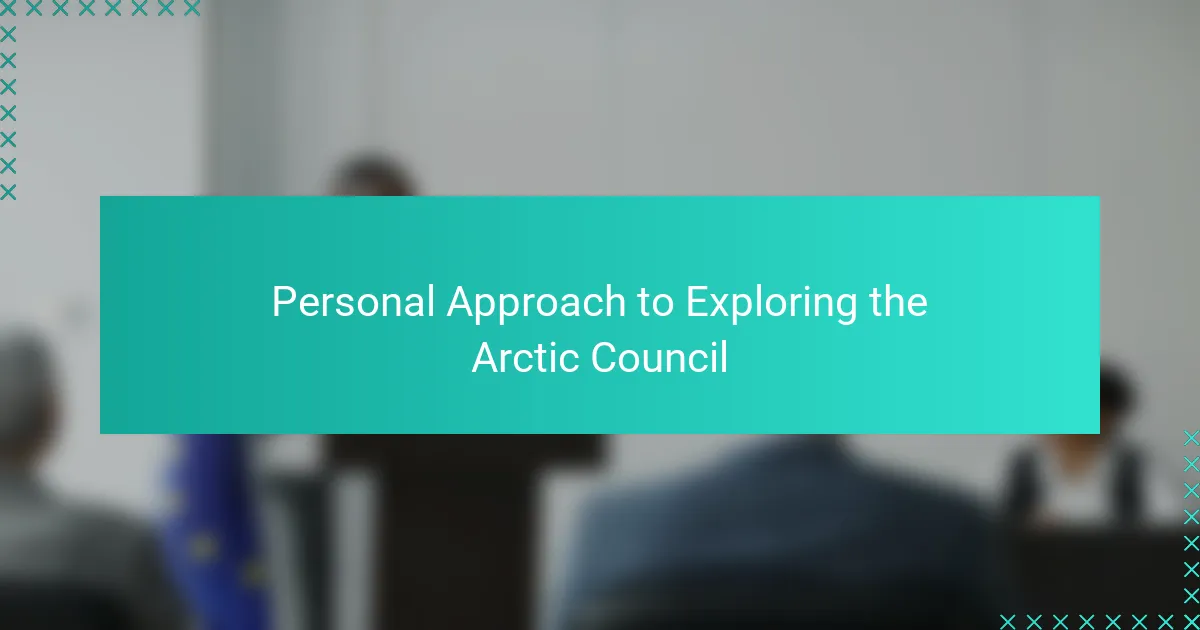
Personal Approach to Exploring the Arctic Council
Diving into the Arctic Council through my own lens, I found that reading reports and attending webinars weren’t enough to grasp its true essence. I made a point to connect with experts and indigenous voices online, which brought the Council’s mission to life in a way no document could. Have you ever experienced how hearing directly from those affected can transform abstract ideas into something deeply real?
I remember feeling a surprising sense of hope as I pieced together stories of collaboration among often competing nations. It struck me how the Council’s emphasis on consensus isn’t just a rule—it’s a reflection of a shared commitment to something bigger than geopolitics. Isn’t it remarkable how patience and listening can build bridges where conflict seems inevitable?
At times, my exploration felt like navigating a complex puzzle. Each member’s interest, each indigenous perspective added layers that challenged my assumptions. But it’s precisely this complexity that showed me the Arctic Council’s significance isn’t about simple solutions—it’s about sustained effort and respect. Don’t you think that’s a lesson worth remembering in global politics today?
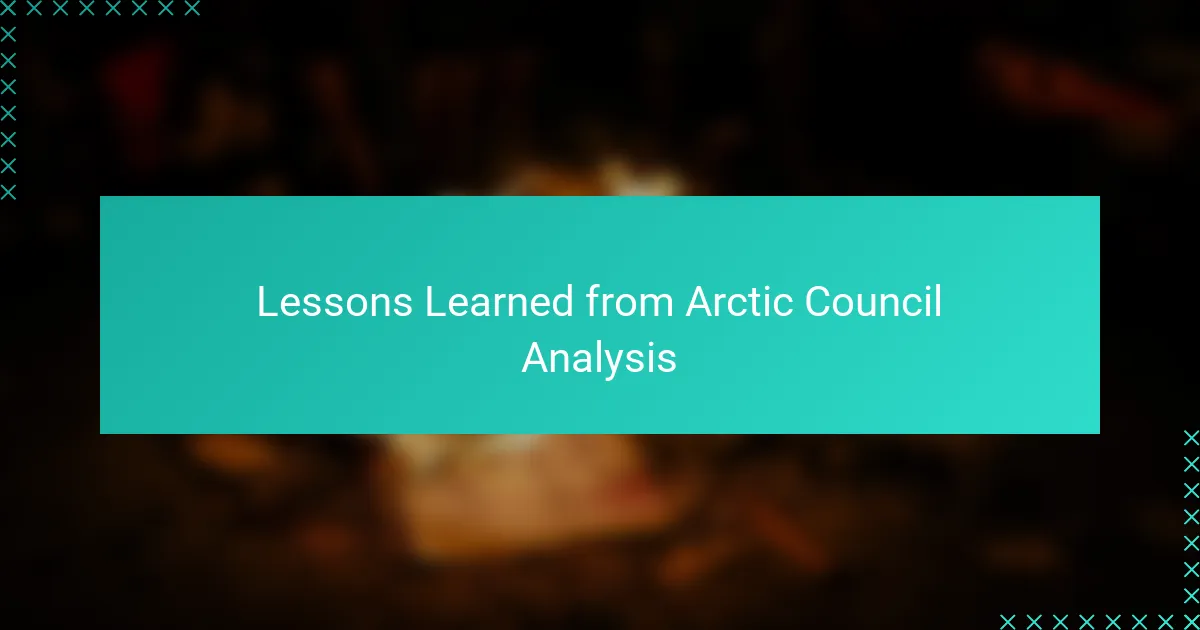
Lessons Learned from Arctic Council Analysis
Reflecting on my analysis of the Arctic Council, one lesson that stayed with me is how patience and persistence matter more than power in shaping international cooperation. It made me realize that sometimes, the hardest part isn’t reaching an agreement but maintaining it through mutual respect. Have you ever noticed how the smallest gestures of listening can open doors that force can’t? That’s the Council’s real strength.
Another insight came from witnessing the delicate balance between competing interests and shared goals. I found myself grappling with how member states navigate economic ambitions alongside environmental responsibilities. It’s a tough juggle, and I often wondered—can this balancing act truly last when stakes keep rising? My reflection is that the Council’s ongoing dialogue, even with its flaws, provides a vital space for these tensions to be aired constructively.
Lastly, the role of indigenous voices taught me something profound about inclusion in global politics. Hearing their perspectives wasn’t just informative—it was humbling. It challenged me to rethink what meaningful participation means beyond tokenism. Isn’t it striking how authentic collaboration relies on valuing knowledge that often goes unheard elsewhere? To me, that’s one of the Arctic Council’s most important lessons for any international forum seeking real progress.
